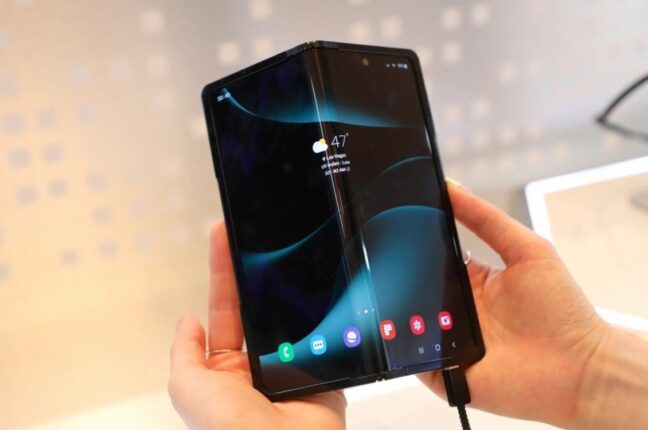
A New Generation of Flexible Screens The Latest Innovation – In this ever-evolving world, technology has become an indispensable part of our daily life. Advances in technology cover not only communications, transportation, and industry, but also affect the way we see the world around us. One of the recent innovations that has caught the eye is the new generation of flexible displays, which have changed the way we interact with display devices.
Flexible screen
is a technology that allows the use of materials that can be bent or flexed to create displays that can adapt to different shapes and sizes. This allows for more flexible, lightweight, and portable display devices. This innovation has opened the door for new applications in the electronics industry, from smartphones to wearable devices.
One example of a breakthrough
in flexible display technology is the development of flexible OLED (Organic Light Emitting Diode). OLED allows each pixel to generate its own light, without the need for a backlighting background like traditional LCD screens. Because of their flexibility, OLED screens can be bent and placed on uneven surfaces, such as on curved devices or even on cloth or paper.
In the smartphone industry
a new generation of flexible screens has brought revolutionary changes. With flexible screens, manufacturers can create more innovative and ergonomic designs. For example, using a flexible display on a smartphone can result in a device with a screen that is curved on both sides, providing an impressive visual experience and maximizing the display.
In addition, flexible screens also provide advantages in terms of durability and resistance. With the ability to flex and avoid cracks or physical damage, flexible screens can reduce the risk of device damage from impact or drop. This increases the lifespan of the device and reduces the need for costly screen replacements.
Not only on smartphones, flexible screens also provide significant benefits on wearable devices. For example, a smartwatch with a flexible display can comfortably wrap around the wrist, providing easy-to-read information with natural hand movements. In addition, the flexible screen also allows integration with clothing and accessories, such as smart jackets or smart glasses, creating a more connected and practical experience.
There’s no denying that the new generation of flexible displays has opened the door to exciting innovations in display technology. The advantages of flexible screens are not only limited to innovative designs, but also enhance the visual quality, robustness and flexibility of the device. In the coming years, we can expect further developments in this technology, with more sophisticated and affordable solutions emerging.
However, with all this technological sophistication, keep in mind that challenges also come. One of the main challenges is the development of materials that are stronger and more durable, as well as efficient production techniques. In addition, privacy and security issues also need attention, considering that devices with flexible screens may integrate sensors or facial recognition technologies that require strong data protection.
The new generation of flexible displays is an important milestone in the evolution of display technology. In recent years, we have witnessed tremendous growth in the development and application of this technology. With flexible screens, we can envision a future filled with devices that are more functional, aesthetically pleasing, and follow the increasingly dynamic flow of our lives.